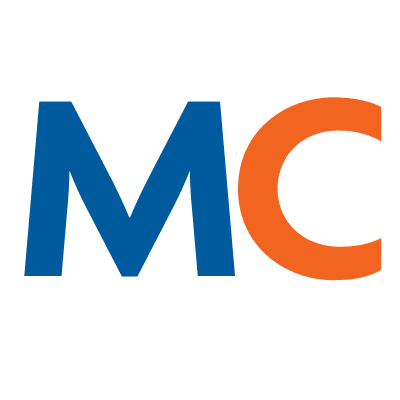- Solutions
- Solutions
- Home Health
- Hospice
- Life Plan Community
- Palliative Care
- Private Duty
- Senior Living
- Skilled Nursing
- Skilled Nursing
- Skilled Nursing Software
- Advanced Insights
- Customer relationship management
- Data and analytics
- Financial & operations management
- Marketing
- Nutrition management
- Referral management
- Regulatory compliance
- Retail management
- Resident engagement
- Revenue cycle management
- Skilled nursing interoperability
- Partners
- Blogs
- Resources
- About
- User Conference

Simplify these four administrative tasks with workforce management
The biggest obstacle to success in most long-term care organizations is the weight of administrative tasks. These cumbersome tasks take up precious time, limit productivity, and hold your business back.
But administrative burdens don’t have to be a permanent obstacle. The right workforce management solution can help you remove hurdles and allow your team and your organization to flourish.
Here are four administrative tasks that can slow down your team.
- Tracking time and labor Tracking employees’ time and labor is essential to your organization’s success. Despite its importance, 38% of American employees still use manual systems like punch cards and paper time sheets, according to QuickBooks Time. As a result, 80% of employee timesheets need to be corrected by employers.* Even when employees report hours accurately, manual time and labor tracking is a huge burden for managers, and a potentially expensive issue.
- Scheduling In shift-based workplaces, employee scheduling is a critical task. But most scheduling is still done manually. In fact, QuickBooks Time says that only 18% of employers use scheduling software.* Without a digital platform and a way to communicate instantly, missed shifts can become a problem. And it’s not just employers who suffer: last-minute schedule postings and changes are hard on workers, too. Scheduling difficulties contribute to the high turnover rate among shift workers, which in turn creates challenges for the organizations that depend on them.
- Gathering data for reporting Smart workforce planning requires accurate data about employees’ time and attendance as well as information about your coverage needs and operational costs. But if you’re using a manual system, reporting and planning can involve a mountain of paperwork–time sheets, budgets and schedules–that are difficult to organize or analyze. A centralized workforce management solution can give you the reporting and analysis you need to more effectively manage your staff and reduce costs.
- Documenting for compliance Staying compliant with federal, state and local regulations is a necessary part of running a business. But frequent changes add to the administrative burden of keeping up with—and adhering to—regulations. Most of the issues employers face are related to overtime. In fact, 83% of all the fines employers pay are due to overtime violations.* This is often due to record-keeping problems, off-the-clock work, or, sometimes, simple human error. Regardless of the cause, failure to comply with regulations can lead to significant legal and financial consequences.
How workforce management can help
A state-of-the-art workforce management platform can help organize, streamline and automate many processes that currently add to your staff’s administrative burden.
For example, a digital platform for tracking time lets workers punch in and out electronically, and all attendance data flows directly into a centralized system. This means managers no longer need to sort through and correct paper time cards and they have improved visibility into time-off benefits and overtime status, which helps reduce compliance risks related to overtime pay.
Accurate, flexible planning
Workforce scheduling software is also a valuable tool, for both management and staff. For managers, once labor needs are input, the system measures those needs against your employee data to develop a cost-effective formula for scheduling. For your staff, platforms should allow them to provide information about their availability and preferences and let them drop, pick up or trade shifts. These features not only help reduce administrative tasks, but also help with work-life balance by giving caregivers more control over their schedules.
Your organization can also benefit from a system that integrates with payroll. This capability helps eliminate duplicate data entry and lets you push schedules and hours directly into your payroll solution. This helps ensure employees are paid on time—which, of course, is one key to keeping staff satisfaction high.
Mobile capabilities
It’s essential to have a system that supports remote or field work by letting users log on using any smart device. Mobile technology lets employees see shift schedules the moment they’re posted and communicate with managers and colleagues in real time. This can help with last-minute scheduling changes, making it easier to ensure adequate coverage for all shifts while giving staff the flexibility that helps them feel in control of their own schedules.
Streamlined electronic reporting
While state and local reporting requirements vary, one reporting example that applies broadly is the Centers for Medicare & Medicaid Services’ requirement that all skilled nursing facilities regularly submit their staffing data through the Payroll-Based Journal (PBJ). Entering this data manually is time-consuming, and any mistakes can have a negative impact on a facility’s public rating. Using software that allows providers to electronically upload and submit time and attendance data to the PBJ saves time and helps reduce errors.
A robust workforce management solution should also include metrics, pre-built reports and notifications that help manage employees who are at risk of going into overtime status.
Compliance updates
Too often, through lack of oversight and inadequate record keeping, some organizations put themselves at risk of costly compliance violations. A workforce management solution can help avoid these issues. Instead of struggling with manual procedures, users can input legal requirements, such as paid time off and overtime, directly into the software. When an employee requests time off or works overtime, for example, the system processes this using an algorithm, so records are no longer prone to human error.
And as laws change, users can simply adjust the rules within the software to help ensure that your organization stays up to date with evolving regulations.
The right technology can increase efficiency
A workforce management platform can help facilities that are trying to make better use of their time and increase overall efficiency. There are many factors to consider when choosing the right system. TimeTracker is one option with key features to help ensure your facility’s success. But whichever option you choose, the right technology can allow you to spend more time caring for your residents — and at the end of the day, that’s what really matters.
Get more details about TimeTracker.
Request a demo today for a closer look at MatrixCare.
See what MatrixCare can do for you
Robert Moore
Robert Moore, RN, RAC-CT, DNS-CT is a Registered Nurse and the Director, of Strategy & Portfolio Management with MatrixCare LPC (Life Plan Communities). Rob started out in healthcare as a CNA in Post-Acute Care and has been a Registered Nurse for over 15 years. During his time in the nursing profession, he has held the following positions: Telemetry Unit Staff Nurse, Unit Manager, MDS Coordinator, Director of Nursing, Quality Assurance, Business Analysis, and Product Manager. Rob is very passionate about Post-Acute care and the nursing profession as a whole and is always looking for opportunities to serve this profession!
Related Posts



See MatrixCare in action
Start by having a call with one of our experts to see our platform in action.
MatrixCare offers industry-leading software solutions. Thousands of facility-based and home-based care organizations trust us to help them improve efficiency and provide exceptional care.
© 2025 MatrixCare is a registered trademark of MatrixCare. All rights reserved.





